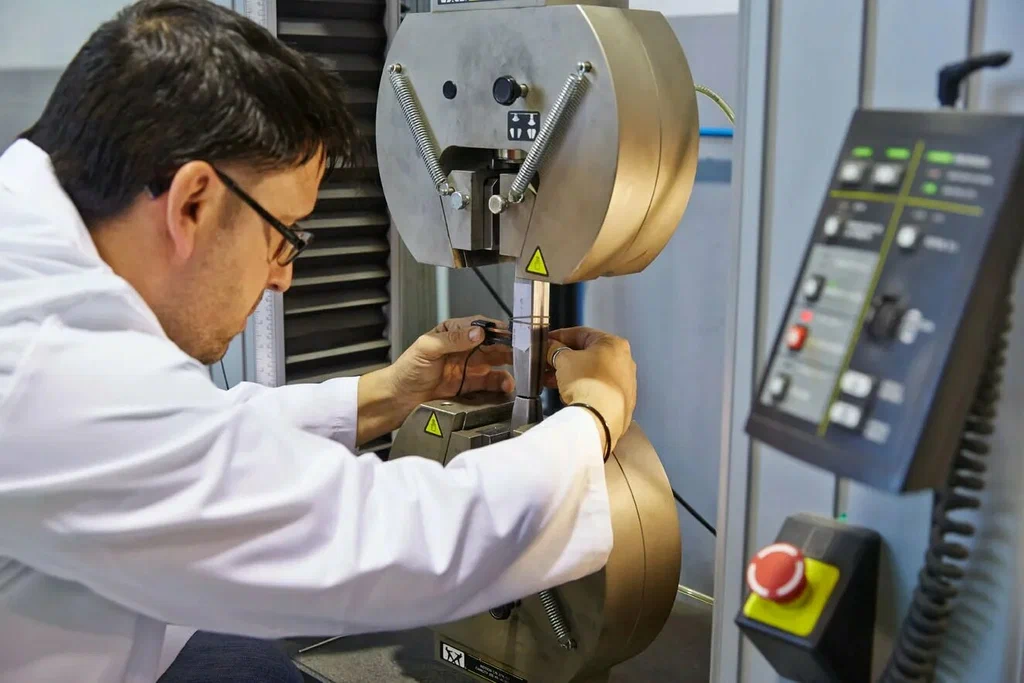Ensuring that products can withstand the friction of wear and tear is essential for durability and quality control. Rub testing plays a pivotal role in evaluating how well materials resist abrasion, allowing manufacturers to maintain high standards for textiles, coatings, packaging, and other goods. In this comprehensive guide, we break down the basics of rub testing, why it is significant, and the techniques used to ensure repeatable results.
Whether assessing the longevity of textile fabrics or the abrasion resistance of protective coatings, rub testing provides critical data for product improvement and quality assurance. Regular evaluation of samples as they wear can reveal whether formulations or manufacturing processes require adjustment. This guide offers a complete overview of rub testing protocols, from sample preparation to data analysis, helping both newcomers and seasoned experts derive maximum value from these predictive simulations of real-world wear.
Table of Contents
What is Material Rub Testing and Why Does it Matter?
Decoding the Complex Science Behind the Evaluation
Material rub testing is a fundamental analysis method designed to measure the abrasion resistance of various materials, particularly in contexts where rubbing occurs frequently. This assessment is grounded in scientific principles that determine how materials respond when subjected to prolonged wear and tear.
At its core, rub testing evaluates the extent to which a material can endure being rubbed repeatedly against another surface—simulating the mechanical and environmental stresses materials face in real-world applications.
The process involves a controlled environment where a standardized material, typically a cotton or felt pad, is rubbed against the sample in a predetermined manner. This not only measures the material’s resistance to deterioration but also provides metrics for assessing its longevity and performance. Understanding the underlying principles—such as friction, wear, and material properties—is essential for anyone involved in quality assurance, material selection, or product design.
The significance of rub testing in quality assurance cannot be overstated. In an era of heightened customer expectations, guaranteeing product quality and durability is vital for manufacturers. Rub testing plays an integral role in quality assurance frameworks across industries such as textiles, automotive, packaging, and flooring. It helps identify potential failure points before products reach the market, minimizing returns, customer dissatisfaction, and reputational damage.
Furthermore, effective rub testing offers manufacturers valuable insights that directly influence product design. If results reveal a material’s vulnerability to wear, manufacturers can adjust compositions or redesign products to reduce high-friction stress points. Thus, rub testing serves not only as a diagnostic tool but also as a driver of innovation and product improvements, ensuring products meet consumer demands and regulatory standards.
Applications Throughout Industries: Where Rub Testing Plays a Role
Rub testing is widely used across industries, underscoring its versatility and importance in material performance evaluation. In the textile industry, rub testing is essential for determining fabric durability, especially in garments exposed to body movement and frequent laundering.
In the automotive sector, materials used in seats, dashboards, and interiors undergo rigorous rub testing to ensure they withstand continuous use while maintaining visual appeal.
The packaging industry also benefits significantly, as materials must endure abrasion and scuffing during storage and transportation. Similarly, in flooring, rub testing helps determine the resilience of materials, assuring consumers that products will maintain their integrity and appearance over time.
As industries evolve, rub testing remains indispensable for producing reliable, high-quality goods that meet stringent performance standards.
Exploring Distinct Methods of Rub Testing: Which One is Appropriate for You?
The Classic Approach: ASTM and Its Standards
The American Society for Testing and Materials (ASTM) has developed a series of standardized methods widely adopted in rub testing. Among the most prevalent is ASTM D4966, also known as the Martindale method. In this test, fabric samples undergo repeated abrasion against a prescribed surface, with wear assessed at set intervals.
Following ASTM standards provides manufacturers and consumers with reliable, comparable results. Conformance not only enhances quality control but also builds trust among stakeholders. In many regulated industries, compliance with ASTM standards is essential for market entry, making them a cornerstone of product development and strategic planning.
Modern Innovations: Advancements in Rub Testing Procedures
Technological progress has introduced advanced rub testing systems that improve precision and efficiency. Tools such as digital imaging now allow real-time monitoring of wear patterns, offering more nuanced insights.
Virtual simulation tools also allow engineers to model how materials will respond under various conditions before physical testing begins. These innovations reduce costs and time while providing valuable data early in the design process. Modern approaches are reshaping rub testing into a forward-looking discipline suited to today’s fast-paced manufacturing needs.
Choosing the Best Method Based on Material Types
Selecting the right test method depends on a material’s characteristics. Hard surfaces such as plastics and metals often require different testing approaches than fabrics or foams. For instance, the Taber Abraser is commonly used for rigid surfaces, while textiles are better suited to the Martindale method.
Understanding a material’s stiffness, flexibility, and thermal sensitivity is crucial in determining the most appropriate test. Additionally, the material’s intended application and industry-specific standards should guide the testing approach to ensure relevant and reliable results.
Deciphering Rub Test Outcomes: What Do the Numbers Really Mean?
Understanding the Scale: From Ratings to Real-World Implications
Rub testing results are typically expressed as numerical ratings representing abrasion resistance. Depending on the method, this could reflect the number of cycles a material withstands before showing a specified level of wear. Generally, higher numbers indicate greater durability.
These ratings must be interpreted in context. For example, textiles rated at 20,000 Martindale cycles may be suited for heavy-duty use, while those below 10,000 cycles may be better suited for low-wear environments. The implications go beyond numbers, affecting product lifespan, maintenance costs, and user satisfaction.
Analyzing Common Pitfalls: What Can Skew Your Results?
Several factors can distort test outcomes. Environmental variations such as humidity and temperature can influence results, especially in sensitive materials. Inconsistent sample preparation—like uneven fabric tension or surface finishing—can also skew data.
Human errors during data collection further highlight the need for strict adherence to standardized procedures and staff training. Calibration and validation are essential for ensuring data reliability. Understanding these potential pitfalls strengthens test integrity and enhances overall quality assurance programs.
Feedback Loops: Leveraging Insights for Progressive Advancement
Rub testing should not be viewed as a standalone measurement but as part of a continuous improvement cycle. Test outcomes can guide refinements in material composition, production processes, and product design.
Incorporating rub test insights into broader evaluation strategies allows businesses to categorize products by durability, meeting diverse consumer needs while fostering innovation. By adopting this feedback loop, manufacturers can deliver products that consistently meet or exceed expectations.
Combining Rub Testing with Other Material Evaluations: A Holistic Outlook
Rub Testing and Durability: Strength through Varied Examination
Rub testing represents just one dimension of durability testing. Comprehensive material evaluation should also include tensile, compressive, and impact testing. Combining these perspectives provides a fuller understanding of real-world performance, reducing the likelihood of failures and enhancing design decisions.
Leveraging Synergy: Integrating Rub Testing with Other Quality Metrics
Rub testing should be integrated with other quality metrics such as colorfastness, tear strength, and flammability testing. This holistic approach provides a complete picture of material suitability and ensures that products meet multiple demands.
By embedding rub testing within broader quality frameworks, manufacturers strengthen their ability to deliver innovative, reliable, and market-ready products.
Future Trends: The Evolution of Material Testing in an Eco-Conscious World
As industries move toward sustainable practices, material testing is evolving as well. Bio-based and recyclable materials require novel testing methods to ensure durability while meeting environmental standards.
Consumers increasingly demand products that balance performance with sustainability. Consequently, manufacturers must consider not only abrasion resistance but also recyclability, sourcing practices, and lifecycle impacts.
Future rub testing will likely integrate advanced sustainability metrics alongside durability evaluations, helping manufacturers innovate responsibly while maintaining competitiveness in a changing marketplace.




